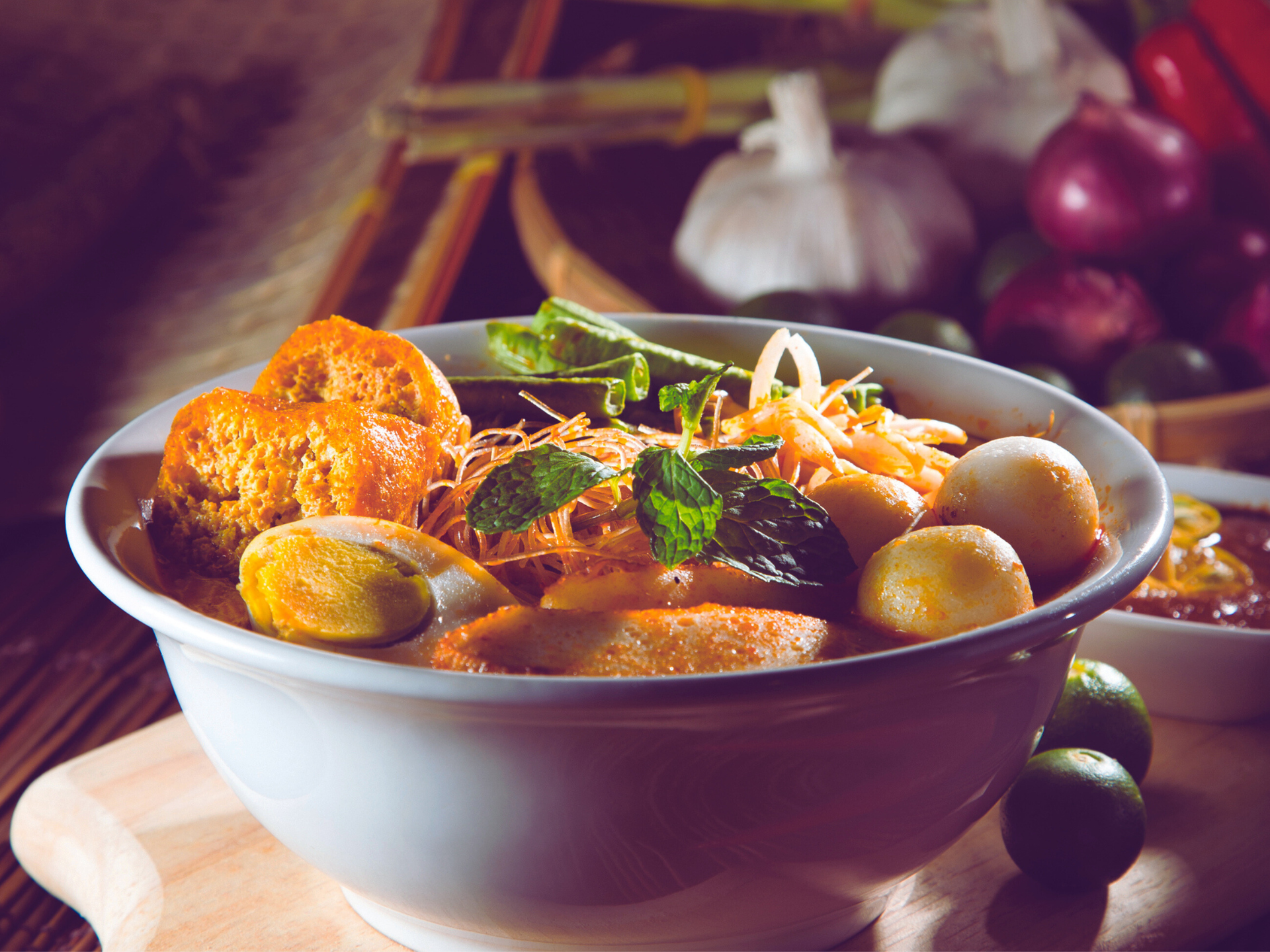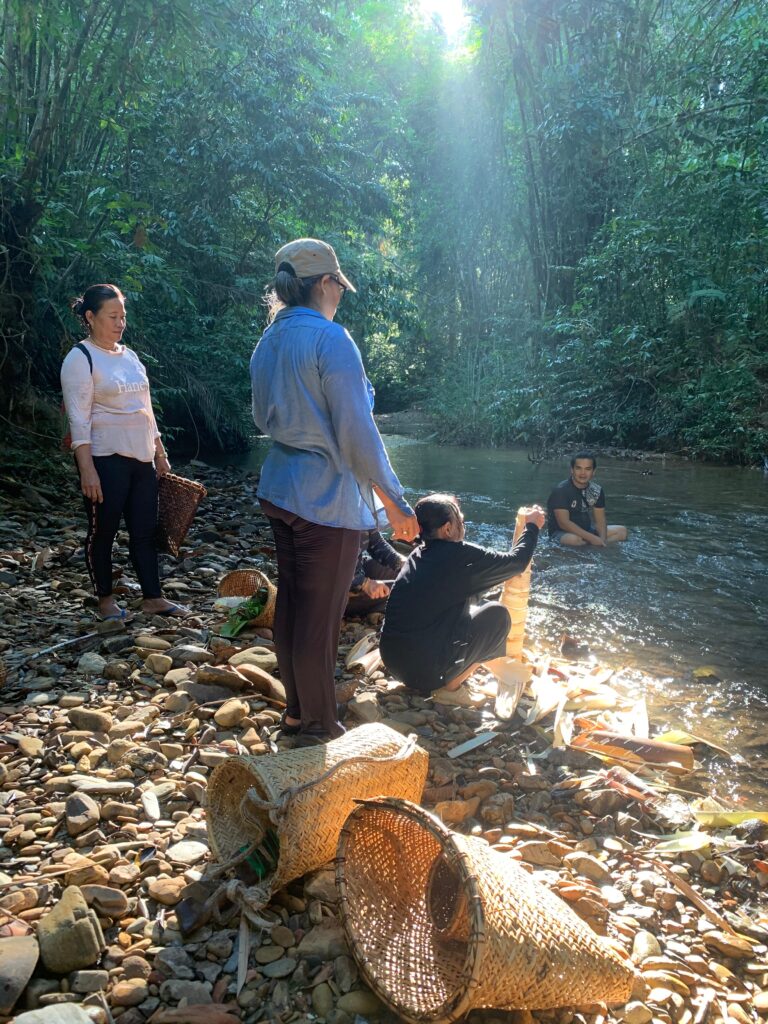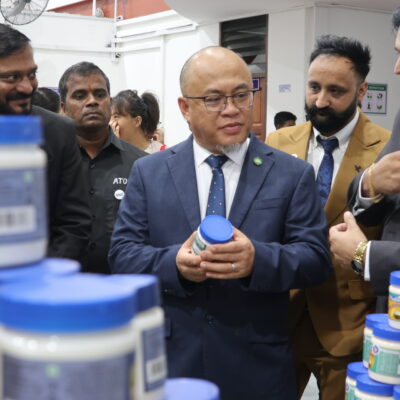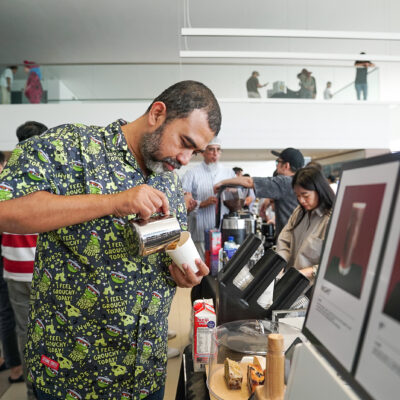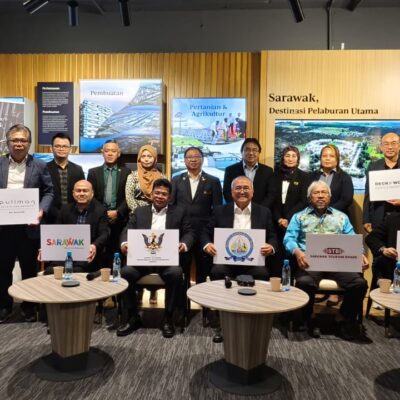Written by Ying Chia |
REPUTATION COUNTS
Kuching’s cultural make up is as diverse as the culinary landscape that emerged from it — roughly 400,000 people live in what is known as Kuching city, mainly made up Malay, Han Chinese, Indigenous Borneo and Indian ethnicities, combines with a centuries-long history full of various political throwdowns and shuffling for the resource rich territory. Especially strong, the Chinese influences on Sarawak region have resulted in a plethora of dishes that are distinctly recognisable as coming from Foochow, Hainanese or Teochew traditions. Some of these items have survived culturally through the diaspora with little to almost no change to their recipes.
The Kompia, for example, is the Chinese answer to a New York Bagel. Albeit much smaller, sweeter and topped with lashings of crunchy sesame seeds. Personally the best versions of it for me are stuffed well with thick slices of salty Spam, but each to their own. Despite travelling thousands of miles to arrive at the settlement of Kuching in the late 1800’s, there has been barely any adaptation to the Kompia in Sarawak, and the traditional food has remained as popular as ever.
Sarawak Laksa, while not perhaps the true place of origin of the dish itself, the state’s version has become undoubtedly the most identifiable. I’m sure most people are familiar with Anthony Bourdain’s famous declaration that Sarawak Laksa was the ‘breakfast of Gods’.
EVERYTHING, EVERYWHERE, ALL AT ONCE
In the make up of Malaysia’s culture, the UNESCO title plays a significant role towards building a local identity that can also be recognisable and appealing to the global market. The choice of ‘gastronomy’ heralds an extension of a new period of creativity for the state, according to Karen Shepard, Strategic Director for the UNESCO Creative Cities Network (UCCN) Kuching, City of Gastronomy. Celebrating the region’s exceptional biodiversity and its identity is of course a large part of the UNESCO designation, as is the rediscovery and identification of the Sarawakian identity within the framework of food culture. The grassroots-led application of the ‘gastronomy’ designation is strengthen by the thriving community of the chefs and food associations, which much of derives from the strong connection to the land and indigenous culture.
The idea is mainly about sustaining development for a robust food economy with the traditional knowledge of local ingredients and land practices as the backbone. But surely as with everything, there’s got to be a saturation point. An economy cannot run on just restaurants or farms.
“So one of the things that the UNESCO designation does is to increase international profile. So that’s one part of it. And I think the other part of it is really using creativity in urban regeneration. Reclamation of space, in using the creative economy and creative events and activities regenerate our wet markets … one of our most important sites of sale,” she explains, adding that they are using digital media to help these spaces recover from the pandemic where food accessibility bumped sales towards supermarkets.
Food festivals and gastro tourism products are also slated to increase the state’s tourism profile and international reputation so you can “effectively walk into pretty much any (kopitiam) and get excellent food on any day.”
THANKS FOR THE MEMORIES
Kuching’s foodie reputation is strengthened by the local desire to preserve and grow the strong cultural and heritage links that the various dishes hold for each community be it Iban, Dayak, Hakka or FooChow Chinese, Malay or Indian. Poh Huai Bin, a Sibu native and food blogger, says he holds Kuching’s hawker favourites like Gu Bak Mee (Kuching style Beef Noodles), Kampua and of course, Kolo Mee, close to his heart with his best food memories coming from nostalgia and cherished moments with his dad.
“Eating these dishes evoke memories and emotions in me — great ones, of a bygone time, a simpler time when happiness could be found in a plate of noodles and my dad talking to me while I was eating. I seek out these dishes and flavours here too, and it is my hope that I will create these wonderful food memories with my son too, so he has these beautiful memories when he’s older and I’m no longer with him.”
The Kenyalang Park Commercial Centre in Kuching, is a wonderful example of this intense love for the traditional. The name is a direct reference of the hornbill, an important bird and cultural symbol for the people of Sarawak especially the Dayak communities, and wandering through one of the oldest ‘modern residential/commercial areas’ of Kuching is like being in a time capsule. Local handmade snacks fill oversized glass jars, plastic wrapped packets for sale hang on every nook and cranny, open lightbulbs hand at eye level with their aging yellow bulbs.
It has remained largely unchanged, and beloved by the community. For a visiting tourist the meaning of such dishes or places will be lost on them, he adds. “They will have their own positive memories of dishes from their hometown like Gai See Hor Fun in Ipoh, which does not have the same allure to me due to lack of emotional context.” Shepard echoes this sentiment, describing Kuching as a close-knit community of different cultures preserving their dishes from home, but also equally blending in with the Borneo landscape and experimenting.
“We’re now at a stage, in the last ten years, where I think there was previously a kind of influx of Malaysian recipes, Malaysia-wide recipes, international recipes, and then suddenly you’ve got a lot of change in educational level (and) now seeing a lot of young chefs who have got Western culinary training, who’ve gone off around the world, had careers, and then coming back and rediscovering these ingredients from their childhood and thinking about what they can do with that through the lens of Sarawak identity.” What the future holds for Sarawak’s culinary landscape, we certainly can’t wait to see.


